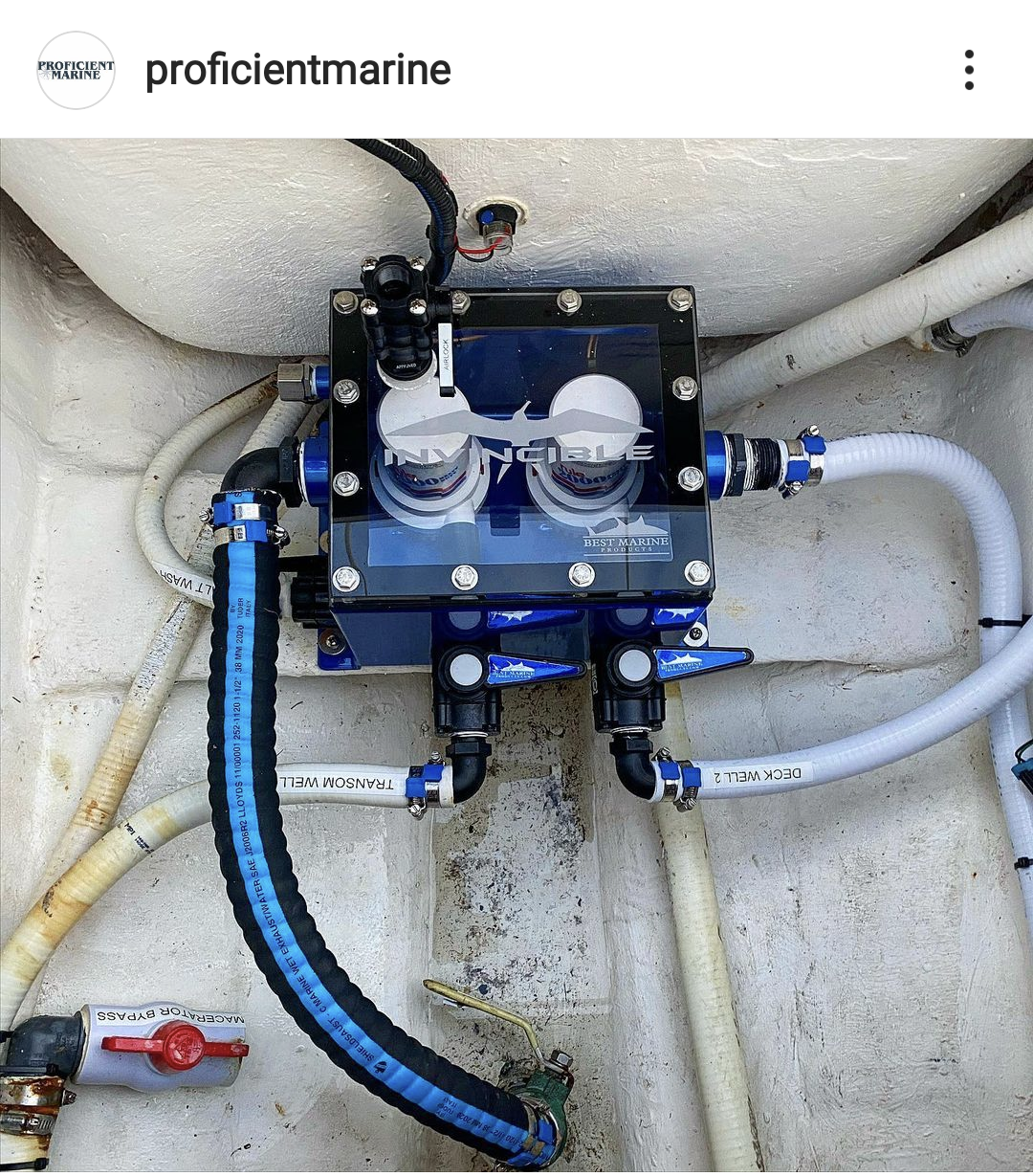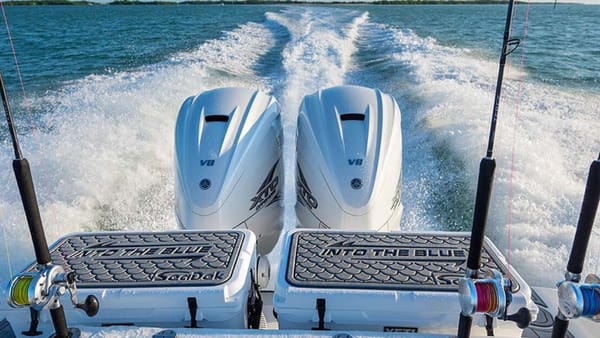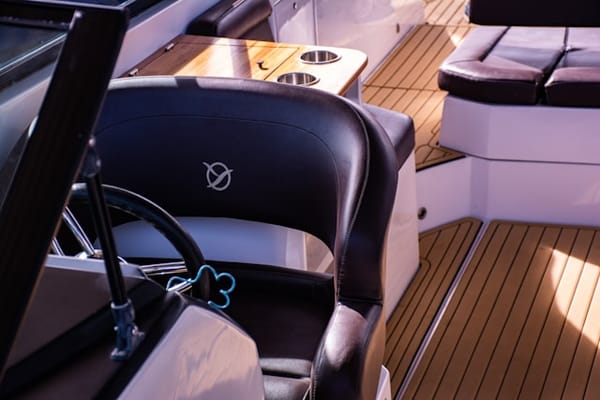Bilge Pump 101: What it Does and Why You Need One (or Two) on Your Boat

Pirates didn’t come up with the term “bilge rat” for nothing. As the lowest, darkest and dankest place on board a boat, the bilge is the perfect hangout for pesky rodents. Hopefully your boat doesn’t have any literal bilge rats, but it still has a bilge that needs tending to.
Along with Anchors, engines and props, a boat’s bilge pump is an essential piece of equipment for a well-maintained, fully functioning and all-around great boat. I wouldn’t leave a private boat dock rental without one (and neither should you). Let’s take a look at bilges and the pumps that keep them dry. Hopefully there won’t be any rats.

Courtesy: Proficient Marine via Instagram
So, what does a bilge pump do? Bilge pumps remove excess water in the bilge, which is the bottom inside of the hull (below the floor boards and under the engine). Water can (and does) get into this area from a wide variety of places: from rain, wake spray, water from being washed, leaks from hatches and windows, engine exhaust and air conditioner condensation. The pump has a float or switch that turns on automatically when needed (there is usually also a manual switch at the helm) to pump this water out through a hose and overboard.
While all of the above-mentioned water entries are fairly incidental (What’s a few drips, right?), they can accumulate if left alone, causing mold, mildew, rust and generally foul-smelling conditions. See where we’re going with this?
Why is a Bilge Pump Important?
- Automatically comes on when you’re not there (such as if the boat is kept in the water at a private boat slip rental and there’s heavy rain)
- Excess water can make the boat unstable as well as cause rust, mold, mildew and musty odors in the interior of the boat
- Too much water entering too quickly can cause the boat to sink
You won’t know if you have an actual serious leak

Courtesy: Proficient Marine via Instagram
Features of Bilge Pumps
- Stainless steel shaft
- High-flow impeller
- Water-cooled motors
- Marine-grade tinned wire
- Low amp to conserve battery power
- Built-in float switch that automatically turns on and off
- Silent and vibration-free operation
When shopping for a bilge pump, you’ll want to check out the GPH, which refers to the flow capacity rating. It’s the maximum amount of water in gallons per hour (or gallons per minute) that it can pump with 12 volts of power.
All size boats can benefit from bilge pumps. Hand-operated bilge pumps can even be used in kayaks. There needs to be at least one bilge pump in the lowest part of the bilge. For a medium-size boat, it’s a good idea to have two bilge pumps for extra security in case one malfunctions. Mount a smaller one (400-500 GPH) in the lowest part of the bilge (this is to pump out all the random water, such as rain water), then mount a larger one (3500 GPH) higher in the bilge for more serious jobs. Large boats can benefit from a bilge pump in every lower compartment of the boat that could hold water.
While a bilge pump won’t be able to keep a boat from sinking if a large amount of water is taken on, it can give you enough time to fix the leak, call for assistance or calmly find safety with another boat.
Parts of a Bilge Pump System
In addition to the pump itself, there are a few other pieces you’ll need for a perfectly functioning bilge pump.
- Thru-hull drain
- Hose (that drains overboard)
- Sensor or float switch if not automatic (automatic bilge pumps have a float and a float switch)
Types of bilge pumps
There are two main types of bilge pump: centrifugal and diaphragm.
Centrifugal Bilge Pump
Centrifugal bilge pumps work via an impeller fan that rotates as water enters through the middle. Then, the impeller forces water into a channeled casing. Then, the fan’s rotating blades increase pressure inside the casing. This forces water to travel through the casing where it’s released through a pump discharge tube overboard. Centrifugal pumps have high pumping power, are fairly inexpensive, can move lots of water, are low maintenance and can withstand small amounts of debris without clogging. They aren’t able to self-prime.
Diaphragm Bilge Pump
A diaphragm bilge pump works like a wet vac. Water is pulled in through an intake valve and then pushed out through the output valve. Diaphragm bilge pumps prime themselves when dry and can run dry for a while without being damaged. Since they’re better at pumping water uphill than the centrifugal version, they can be installed in drier and more convenient places than the bottom of the bilge. They can’t move as much water as a centrifugal pump and can’t handle even small amounts of debris, but a filter can be added to help with clogging.
Tips to Keep Your Bilge Pump Running Smoothly
As unpleasant of a job as it seems, it's not hard to keep your boat's bilge nice and clean. The bilge area and pump just need a little attention when you’re doing routine general maintenance on the rest of your boat.
- Test regularly to make sure it’s running properly (you don’t want to leave a private boat slip only to get out on the water and find out it’s not working)
- Check and replace fuses if needed
- Check wires for rust on automatic bilge pumps
- Clean out the filter screen to keep it from becoming clogged
- Check the outlet hose for damage
- Put drip pans under the engine to keep oil from dripping into the bilge
- Keep it clean
Why Keep the Bilge Clean?
- Prevents bacteria growth
- Prevents rust and corrosion of the bilge pump as well as other equipment in the bilge
- Prevents foul odors
- Excess oil and debris can clog the pump, which keeps float switches from properly operating (water with oil in it should not get pumped overboard for environmental reasons)
- Some newer bilge pumps won’t work if they sense oil in the water
While the boats bilges of today aren’t nearly as scurvy as the pirate ships of yore, they can’t help but have some freestanding (and foul smelling) water and other muck and debris that collects in the bilge. The fairly inexpensive cost of a bilge pump is a small price to pay for unnecessary damage and inconvenience.
Hopefully you’ve gathered some tips to help you understand the basics of bilge pumps and how they help keep your boat afloat and smelling sweet whether you’re on the water or at a private boat dock for rent. Happy boating!



